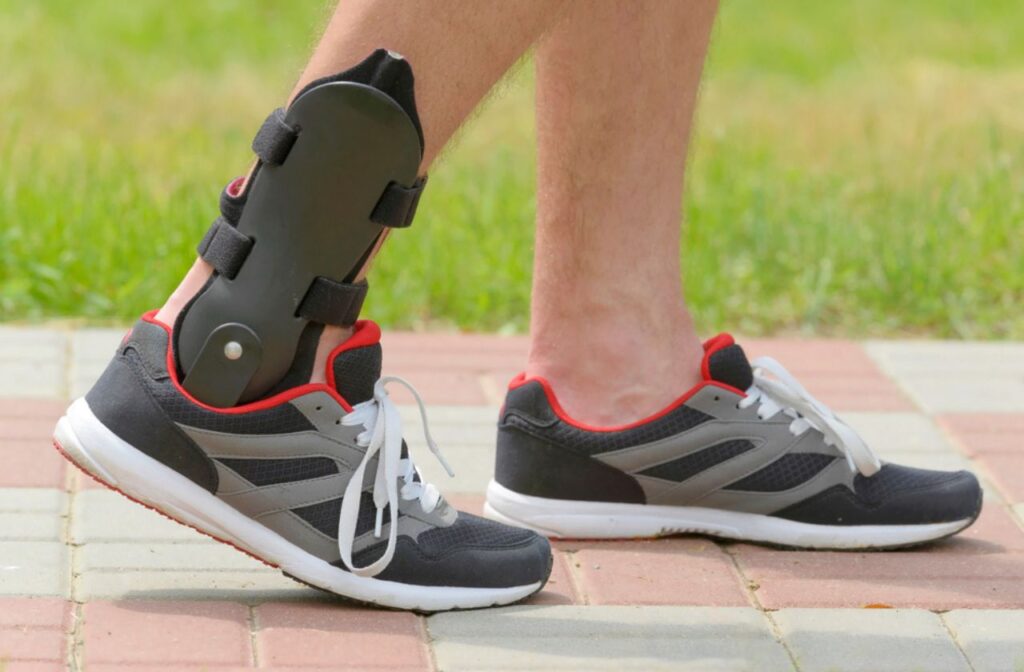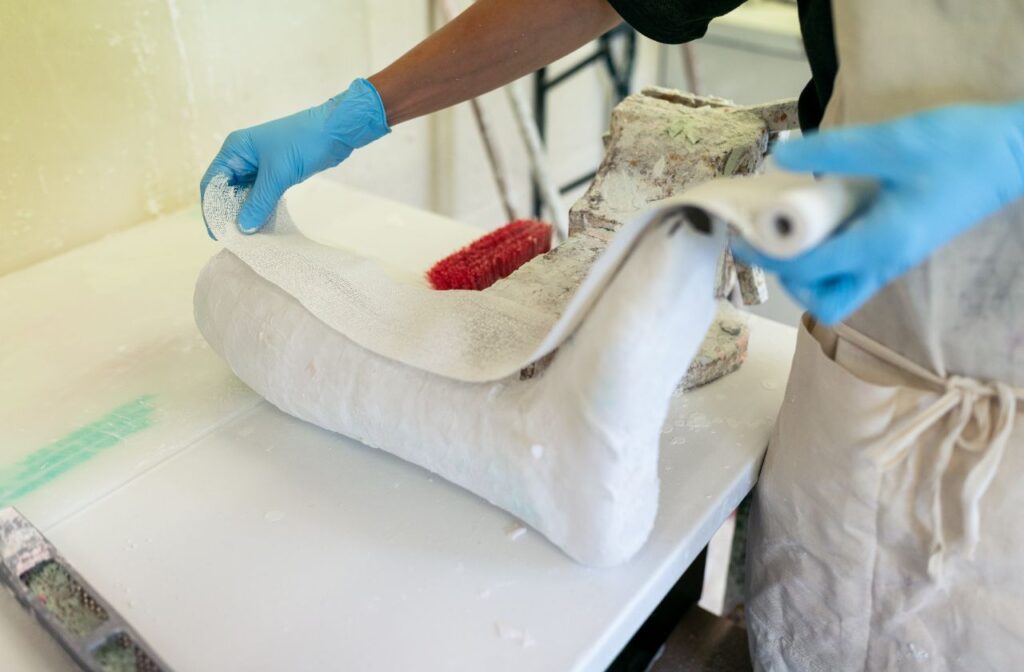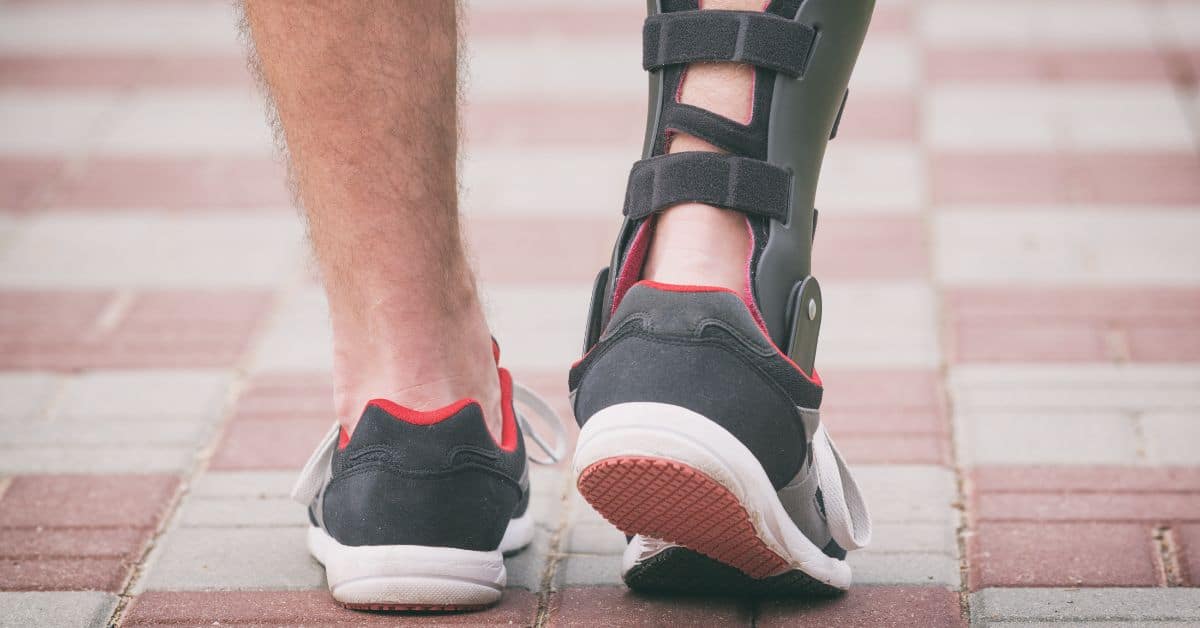Strokes are a condition which affects a large number of Australians. Every nineteen minutes someone has a stroke. One in four of us will have a stroke in our lifetime. Stroke is a big killer, but it also has long-lasting detrimental effects if survived. Some of these effects result in the need for podiatry for stroke patients.

What is a Stroke?
A stroke is the interruption of blood flow to a part of the brain. Even short interruptions to blood flow have the ability to severely damage the brain. The two ways this happens are when a clot travels to one of the arteries in the brain and forms a blockage, and when there is damage to arteries in the brain causing a bleed onto the brain. These are referred to as an ischemic stroke and hemorrhagic stroke, respectively.
All strokes have varying individual effects. The effect depends entirely on which specific area of the brain had blood flow interrupted. It also depends for how long. Commonly speech, motor function, information processing and sensory input are affected. Often this effect is unilateral, as the functions of the brain are generally split with the left side of the brain controlling the right side of the body and vice versa. This is why common immediate signs of stroke to look out for include one side of the face drooping, slurred speech and difficulty raising both arms.
If you would like further information about the kinds of stroke, causes, signs and symptoms, and resources for patients and their families, Stroke Foundation Australia is a helpful public resource.

How does stroke affect the lower limbs?
A common long-term complication of stroke is when there has been damage to the motor function on one side of the body. The damage to the brain may have resulted in temporary or permanent damage to the nerves controlling the muscle function of the lower limb.
Generally the larger muscle groups (e.g. hip) will retain the most function, while the smaller muscles are the most likely to be affected (e.g. ankle and foot). This is why we see many patients struggling with “foot-drop” after a stroke. This means that your leg has basic control but you are unable to move the ankle joint well-enough to clear the ground during gait.
What can Podiatrists do for Stroke Patients?
General Foot Care
One way podiatrists can help is with general foot care. General foot care involves helping people cut their toenails and clear hard skin (callus) on their feet. Due to the effects on motor and sensory nerves there may be increased pressure going through different areas of the feet. This means a build-up of callus. Stroke patients can also find bending down and cutting their nails much harder to do safely. This is where a podiatrist will help. The podiatrists at Advance Foot Clinic are happy to take care of your feet safely for you and discuss any ways they may be able to help with the effects of the stroke on your lower limbs.
Ankle-foot Orthoses (AFOs)
A common after-effect of stroke is foot-drop. Podiatrists are able to treat this problem by prescribing the patient an ankle-foot orthoses (AFO). AFO stands for Ankle Foot Orthoses. An AFO is a type of custom orthotic that controls motion both in the foot like a typical orthotic as well as at the ankle joint.
AFOs are used for patients who need extra stability in these joints and are commonly used in cases where there is muscle weakness which interrupts normal gait. An AFO will improve gait by supporting weak muscles, accommodating deformities, reducing involuntary movements as well as maintaining joint alignment.
An AFO will dorsiflex (hold-up) the foot at the ankle joint, which allows the leg to be swung without the foot hitting the ground. This means stroke patients carry out a relatively normal gait pattern and ambulate independently.

Who needs an AFO?
Conditions that require an AFO are those which involve the stability of the ankle joint or a muscle weakness in the lower legs which affect the person’s ability to clear the ground when walking, which is known as “foot-drop”. Some examples of such conditions include:
- Upper and lower motor neuron conditions such as cerebral palsy and muscular dystrophy
- Posterior tibial tendon dysfunction (adult acquired flat foot)
- Severe hypermobility
- Chronic ankle instability
- Post-stroke
There are a range of AFO types available. Traditionally, an AFO is made of a hard plastic (polypropylene) and this is what most people may picture if they have had an AFO before. However, modern advancements have lead to more flexible and comfortable AFOs such as carbon-fibre AFOs and Richie braces.
Depending on the injury or condition you have, not every AFO will be suitable. Some AFOs allow for some movement at the ankle joint, some flip the foot up with a spring, while others restrict ankle motion entirely. By seeing one of our Podiatrists at Advance Foot Clinic, you will ensure that you are properly assessed and fitted to the correct AFO for your needs.

What is a Richie Brace?
Richie braces are a type of ankle foot orthoses (AFO). While there are a number of different styles of AFO, the Richie brace is one of the most popular options both among podiatrists and patients. The Richie brace was first developed in 1996 by sports physician Dr Doug Richie and has since then became a suitable replacement for most traditionally made AFOs.
Why choose the Richie brace? Advantages of the Richie brace
Richie Braces are designed to be more lightweight, flexible and comfortable than traditional AFOs. One of the main reasons they are more comfortable is they do not cover as much of the leg and ankle as a traditional AFO. A Richie brace has the following advantages:
- Lightweight
- Cooler with better airflow
- Less rigid
- Aesthetically pleasing
- Includes custom made foot orthotics
- Can fit into most shoes
- Can work with orthotic-friendly sandals
How do I get an AFO or Richie Brace?
AFOs are not something that can be bought off the shelf. AFOs and Richie Braces will be made custom for each patient. The process for getting an AFO is very similar to getting a custom orthotic made. However, instead of taking a 3D scan of just your foot, we will make a plaster cast of your foot, ankle and lower leg.
- Initial appointment for assessment and to make a decision about the type of AFO needed.
- Biomechanical and casting appointment. We recommend you wear comfortable clothing that allows for access to your lower legs.
- Podiatrist completes and sends off the prescription with the plaster cast to the orthotic lab.
- A 4-6 weeks wait while the lab makes the AFO.
- Dispense appointment. We recommend you bring appropriate footwear (runners or wide deep shoes) and long comfortable socks.
- Review appointment 2-4 weeks later. At this appointment any problems with the AFO will be addressed by the podiatrist.

What are the next steps to book podiatry for stroke patients?
Podiatrists deal with the complications of stroke when it affects the lower limbs. If you are interested in finding out more about treatments for patients who have suffered from stroke, please book an appointment to see one of our podiatrists. You can also call 1300 76 33 66.


